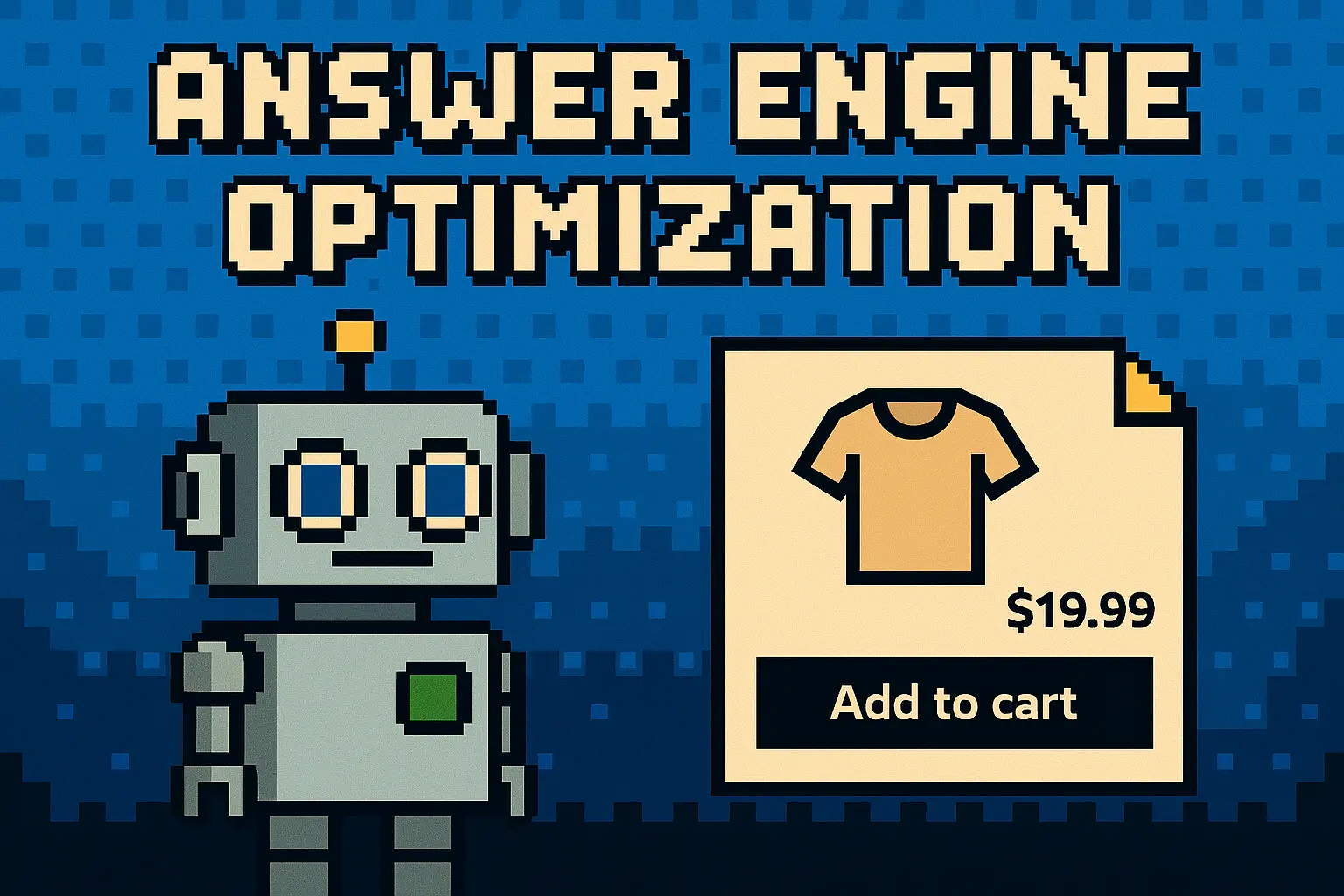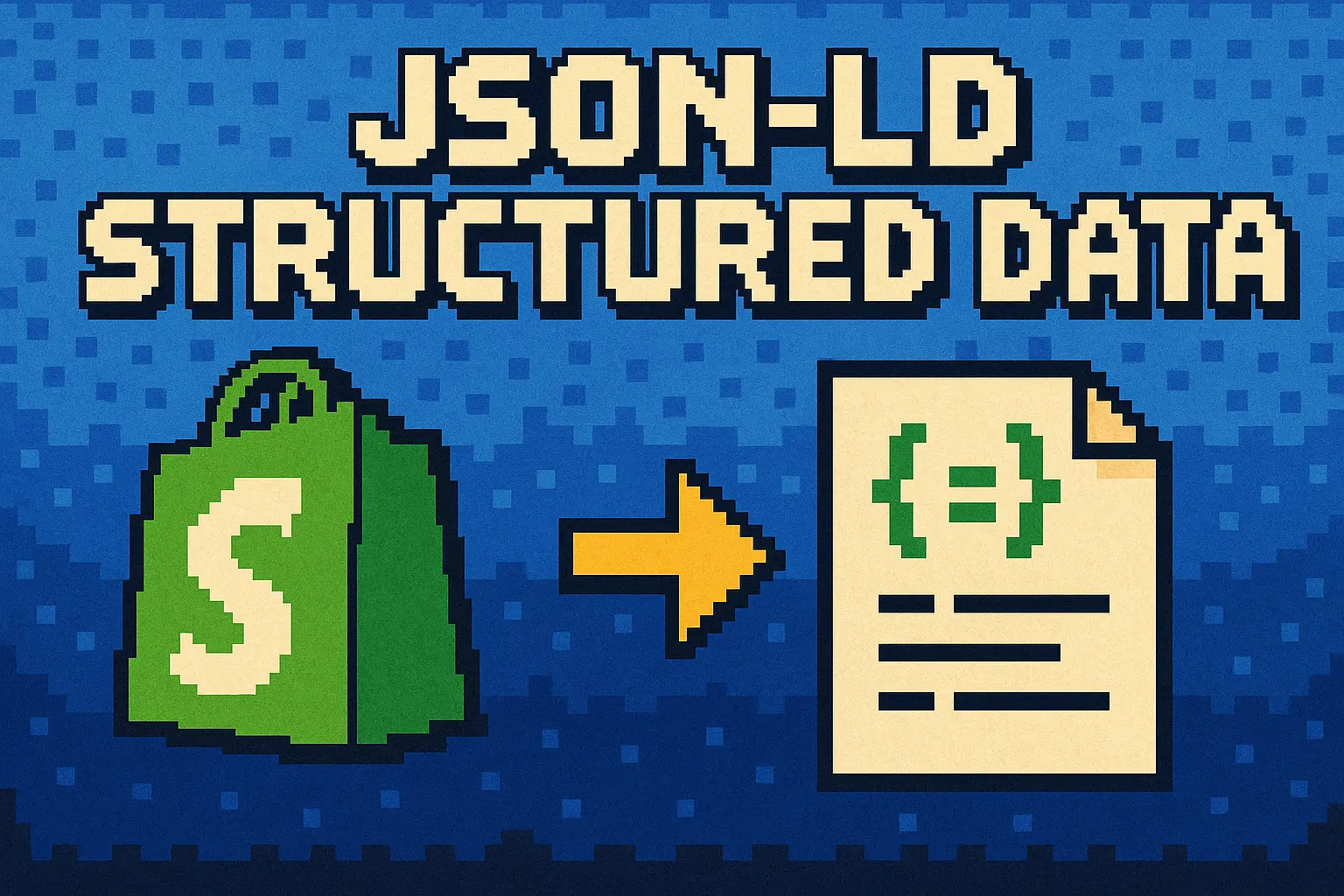Answer Engine Optimization (AEO) for Shopify: : How to Get Mentioned by Chatbots in 2025
Search is changing; fast. Shoppers aren’t just typing keywords into Google anymore. They’re asking questions directly to chatbots like ChatGPT, Perplexity, or Google’s new AI Overviews and getting full answers back.
The question for Shopify merchants is: how do you make sure your brand shows up in those answers?
That’s where Answer Engine Optimization (AEO) comes in. It’s the next evolution of SEO. less about ranking for specific keywords, and more about being chosen by AI systems as a trusted source.
Let’s break down what AEO means for Shopify, why it matters in 2025, and the practical steps you can take to make your content more “answerable.”
What Is AEO (and What Makes It Different from SEO)
Answer Engine Optimization (AEO) is about structuring your content so that AI systems, like ChatGPT with Bing, Google AI Overviews, and Perplexity, can easily understand, quote, and cite it when answering user questions.
Think of it as SEO for the AI era. Traditional SEO focuses on getting your page to appear in search results of search engines (Google, Bing, etc). AEO on the other hand focuses on making sure your page is used in the AI’s actual answer.
In Shopify terms, this means writing and structuring your product pages, blog posts, and FAQs so that when someone asks, “What’s the best moisturizing soap for sensitive skin?”, the AI chooses your product page or article to support its answer.
It’s not about gaming the system or writing for robots. It’s about making your content crystal clear, trustworthy, and easy for both humans and AI to understand.
Why AEO Matters for Shopify in 2025
AI chatbots are no longer a novelty they’re how people search and they are here to stay. According to Gartner, by 2026, traditional search volume will drop by 25% as users turn to AI assistants for instant answers. Gartner Source
When your content is cited by an AI model, three big things happen:
- You get higher-intent traffic. Users who click on AI-cited links are already primed to trust your brand. They’re clicking because the AI presented your content as an authority.
- You build long-term authority. Once your content is cited or referenced by an AI system, that mention can influence future versions of the model. Early movers in AEO often become the “default” recommendations.
- You stay relevant as search evolves. Models skip over what they already “know”, the data that they were trained on. They look for new, high-quality, factual content to supplement their existing knowledge. That means fresh, accurate, structured content is what triggers retrieval and citation.
In short: if your Shopify store’s content isn’t optimized for answers, you risk being invisible in this next phase of search.
How AI Answer Engines Choose Sources
When AI systems require additional information in order to answer the users question, they follow a process known as Retrieval-Augmented Generation (RAG). Here’s how it works in simple terms: From Google
1. The AI retrieves web pages that look relevant to a question. Google uses a "query fan-out" method to create a response.
2. It reads and summarizes them to generate an answer.
3. It decides which sources to cite or display based on trust, clarity, and structure.
So what makes your content more likely to be chosen?
- Accuracy and clarity: Clean, fact-driven writing with clear explanations.
- Structured data: FAQ, HowTo, and Product schema help AI systems identify answers quickly.
- Checkout our Guide on How to Add Structured Data to you Shopify Store
- Topical authority: Consistency across your site. FAQs, blogs, and product pages should reinforce each other.
- External trust: Mentions from other credible sources (the new backlinks).
- Strong E-E-A-T signals: Real author information, contact details, reviews, and transparent policies.
The takeaway: the easier you make it for an AI to retrieve and quote you, the higher your chances of showing up in its answer.
AEO Playbook for Shopify Merchants
Here’s how to apply AEO principles directly to your Shopify store:
1. Keep Your SEO Foundations Strong
AEO builds _on top of_ traditional SEO it doesn’t replace it.
That means the basics still matter, as Highlighted from Shopify
- Fast, mobile-friendly site performance.
- Clear internal linking between related pages.
- Link building with quality backlinks
- A valid sitemap submitted to Google Search Console.
- Clean, organized theme structure.
Think of SEO as the foundation and AEO as the framework that helps AI understand and promote what you’ve built.
2. Create “Answerable” Pages
Start by turning your most common customer questions into actual sections on your site. Add FAQ blocks to product pages and use natural, conversational phrasing like:
- “How do I wash my merino sweater?”
- “Is this compatible with XYZ?”
Answer right below each question with a short, direct explanation (40–60 words).
This format isn’t just helpful for shoppers, it’s perfect for AI systems trained to find Q&A patterns. Add FAQ schema to help search engines and chatbots detect these structures automatically.
🚀 Checkout our app Schema Ninja and our new AI Product Automatic FAQs! Add product FAQs to all of your products in just a few clicks.
3. Strengthen Structured Data
Most Shopify themes already include basic Product schema, but don’t stop there. Add FAQ, HowTo, or Article schema where relevant and validate it using Google’s Rich Results Test.
Keep your product info (price, availability, reviews) accurate and consistent across both schema and visible content. AI systems rely on that consistency to trust what they’re reading.
4. Make Your Content Quotable
When AI systems pull from your pages, they often lift one or two sentences that summarize the answer. So make sure every key section includes a **short, fact-rich paragraph** at the top that explains:
- What is is
- Who it's for
- Why it matters
Use bullet points, comparison tables, and clear formatting. The more scannable and factual your writing, the easier it is for AI to include your content in its summary.
5. Build Brand Mentions (the New Backlinks)
In the AI era, brand mentions across trusted websites are becoming just as important as backlinks.
If your store or content is cited multiple times across reliable sources, such as industry blogs, eCommerce newsletters, or expert roundups, AI models recognize your brand as more authoritative.
This doesn’t happen overnight, but consistent visibility across credible sites strengthens your position in AI search.
Write for Both Humans and AI
The key to AEO isn’t writing “for AI" it’s writing with clarity.
Use natural, conversational phrasing that matches how real people ask questions. Avoid keyword stuffing. Focus on useful, accurate, and easy-to-read content.
AI systems, and human readers both reward honesty and clarity. Include short author bios, real experience, and factual details. Transparency builds trust, which is the currency of AEO.
Final Thoughts
Search is shifting from lists to answers. By optimizing your Shopify content for clarity, structure, and authority, you’re not just preparing for AI you’re setting your brand up to become the answer customers see first.
Focus on what AI systems and people both value: useful, trustworthy, well-organized information. That’s how your store can earn citations in AI-generated answers and stay visible in the next evolution of search.
Sources
- https://developers.google.com/search/docs/appearance/ai-features
- https://developers.google.com/search/blog/2025/05/succeeding-in-ai-search
- https://www.gartner.com/en/newsroom/press-releases/2024-02-19-gartner-predicts-search-engine-volume-will-drop-25-percent-by-2026-due-to-ai-chatbots-and-other-virtual-agents
- https://ahrefs.com/blog/geo-is-just-seo/
- https://help.shopify.com/en/manual/promoting-marketing/seo/seo-overview









.webp)

.png)